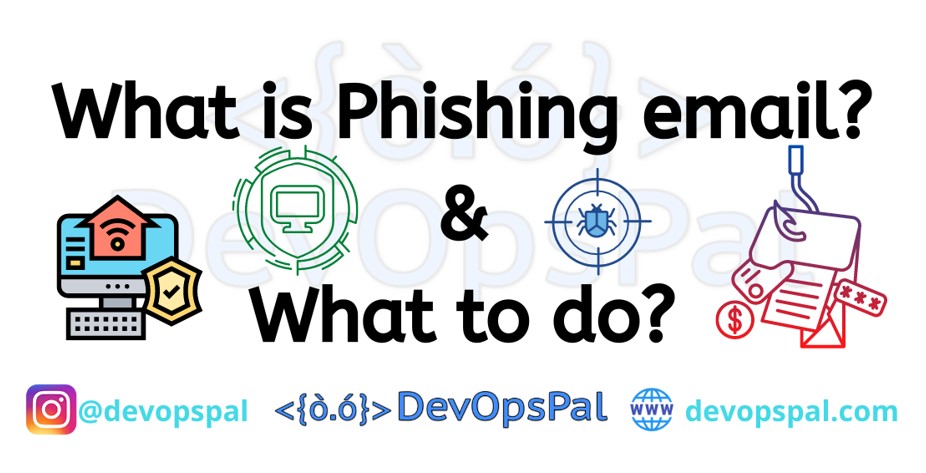Are we safe? How can you make sure that you are not vulnerable to the scams which are increasing day after day? In this post, we will discuss about Phishing attacks where huge number of individuals and companies were affected due to lack of information on being secured and how to not getting into the baits of scammers.
What are Phishing attacks and what to do?
Phishing emails are becoming an important topic in everyone’s lives these days. Every individual is connected to the internet one way or the other and we all are living in the email and social world. It is very important to know what phishing emails are and how we can be protected from them.
Be Attentive and Beware of Phishing Attacks:
Phishing is an attempt to get access to your personal information and get into your online accounts using deceptive messages via emails, ads, SMS, or websites that look similar to the site you frequently visit and use. There are several ways a hacker can trick you to get into the hacker’s bait using such deceptive forms of digital communication. Phishing attacks mostly happen via digital and electronic communication. Scam calls is a another way to steal your personal information such as credit card details, SSN details, date of birth details.
What happens when our personal information is exposed?
When our personal details are exposed, scammers can use these details to get access to the online accounts and transfer money or get our personal data which are sensitive and which can be used as a reason for ransom. This creates a huge headache and major damage can happen for our lives.
Examples of Phishing attacks:
As mentioned earlier, there are several ways a scammer can get you right from your mobile phone or computer system. Some of the ways you might experience are
- A phishing email which might look exactly as your bank sends you. Once you click on the links from that email, it might take you to a similar looking bank login page but it is not. If you enter your credentials there thinking it is your bank’s website, the scammer gets your ID and Password.
- Phishing emails with fake links inside might also direct you to another website with malware virus in it which gets installed on your system quickly without evening knowing. Your system is now infected with a virus and we can imagine what the possibilities are with such malware viruses.
- You might get phone calls which we can call scam calls, and these calls come from scammers where they try to talk with you in a legit manner and try to trick you to get more details or might trick you into joining something which might require credit card information or other personal information.
- Businesses might experience phishing emails impersonating other users from other departments requesting for sensitive information or money. These kind of emails are usually come with fake email addresses with the impersonated user’s first and last name
- Some emails that we receive can be fake emails with slight changes in the user’s email with the wrong organization’s domain name.
- Several other ways can also be considered.
Who is behind the Email Phishing scams?
These scams are carried out digitally/online by hackers and scammers who are tech-savvy and they are identified as theft criminals. These scammers use fake links, spam, fake websites which are designed to look similar to the real websites, SMS messages and emails that trick you into getting involved in exposing yours/others sensitive data/information. Once the scammer gets your data, they can create fake accounts in your name and might damage your identity or steal your finances.
How to be protected from phishing?
There should always be a few things that are needed to be remembered and kept in our minds even though you are very busy or distracted. As information is everything in this current world, we need to stick to our information to ourselves.
- Never open any attachments from unknown emails or messages in your computer or phone.
- Always avoid the websites which are looking phishy.
- Never give personal information in unknown websites or requests from emails or messages. Always go to the website by yourselves and then proceed with your logins.
- Always type in the trusted URL website link of the company’s site in the address bar of your web browser and do not trust the links provided in emails.
- Always use complex passwords with more than 10 characters and uppercase, lowercase, number and characters. This complexity keeps it hard to crack.
- Setup rules in emails to keep the phishing emails sent to spam folders and delete if known.
- If you suspect that a phishing email has been received, contact the company by phone to check if the email is legitimate or not.
- Use proper security measures for your computer which keeps scanning your system for any viruses.
- Always use Total Protection Antivirus software applications which continually try to keep your system safe from these ransomwares/malwares.
- Always update your systems windows updates and keep them up-to-date.
- Have multi-factor-authentication for all your accounts.

